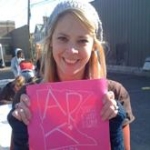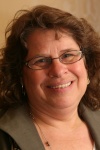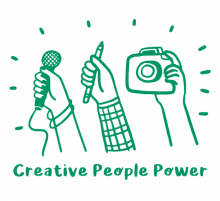
Michele Anderson
Embodied energy. For anyone working to save a historic building from the wrecking ball in their town, this preservation term has likely come up in the fight— it powerfully illustrates the fact that buildings are literal repositories of the energy, labor and materials that they took to be constructed.
I love this image of energy just bubbling under the surface of our old buildings. It also makes me think about the stories, relationships and imagination that our historic buildings hold within their walls. For a long time I have wondered: How might creative placemaking be a strategy in activating a building's embodied cultural energy – even before a permanent solution is found for its reuse? And how might many small creative gestures lead us to authentic and compelling reuse of the building, and attract responsible stewards of both the building's cultural and physical embodied energy?
In Fergus Falls, our former state mental hospital, or the Kirkbride Building, has been front and center as a key community and economic development issue since 2005. Last July, the narrative of this complex problem began to shift closer to a renaissance, as a new developer and the city finally began the complicated process of working out a purchase agreement and redevelopment plan.
There is still a lot of work to be done and I admire the individuals behind the scenes who are working out the complicated web of tax credits and other things I don't fully understand. As the rest of us wait to see if the building will finally have a new life, small acts of creative placemaking through our community's Imagine Fergus Falls project have been helping the community step back ever so slightly from the preservation fight, and focus more on temporary animation of the space and artist-led storytelling about the building.
Our first official activity of Imagine Fergus Falls, a project funded in part by the National Endowment for the Arts Our Town program, was a community picnic this fall in front of the hospital's administrative tower. The picnic featured our community jazz band, The Lakes Area All-Stars, who played from the same sheet music that was used by the hospital's resident band, The Happy Ramblers. Our community college choir also performed. A local photographer created a lovely (and hilarious) photo booth with costumes for friends and family to pose in, and another visual artist facilitated a community history collage with photos both of the buildings history and the preservation efforts in more recent years. We even had a camera obscura booth set up in front of the tower, made from a portable ice fishing house.
This event was a hit, and a way to demonstrate to the community what we had in mind with using the arts to foster interaction about the building. But this winter, the magic has really taken hold as we have been forced to take our creative placemaking efforts indoors, and unable to do activities at the Kirkbride Building itself because, well, we would freeze there. The average temperature here in west central Minnesota has not risen above zero for several months, which makes creative placemaking in an abandoned building near impossible.
As it turns out, indoor creative placemaking, slightly removed from the place that you are focusing on, is something really special too.
Read More
















 Andrew Taylor
Andrew Taylor

 Laura Zabel
Laura Zabel

















